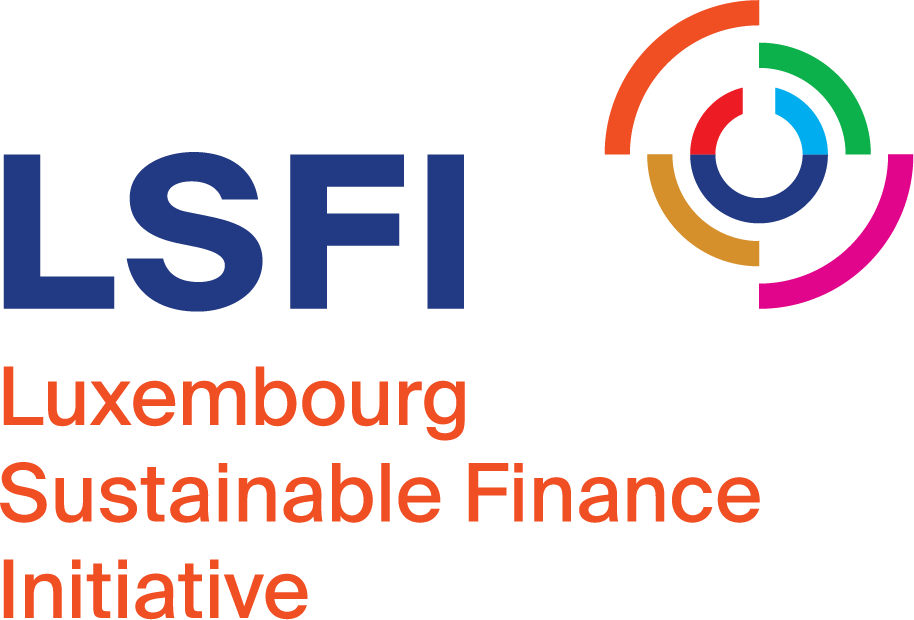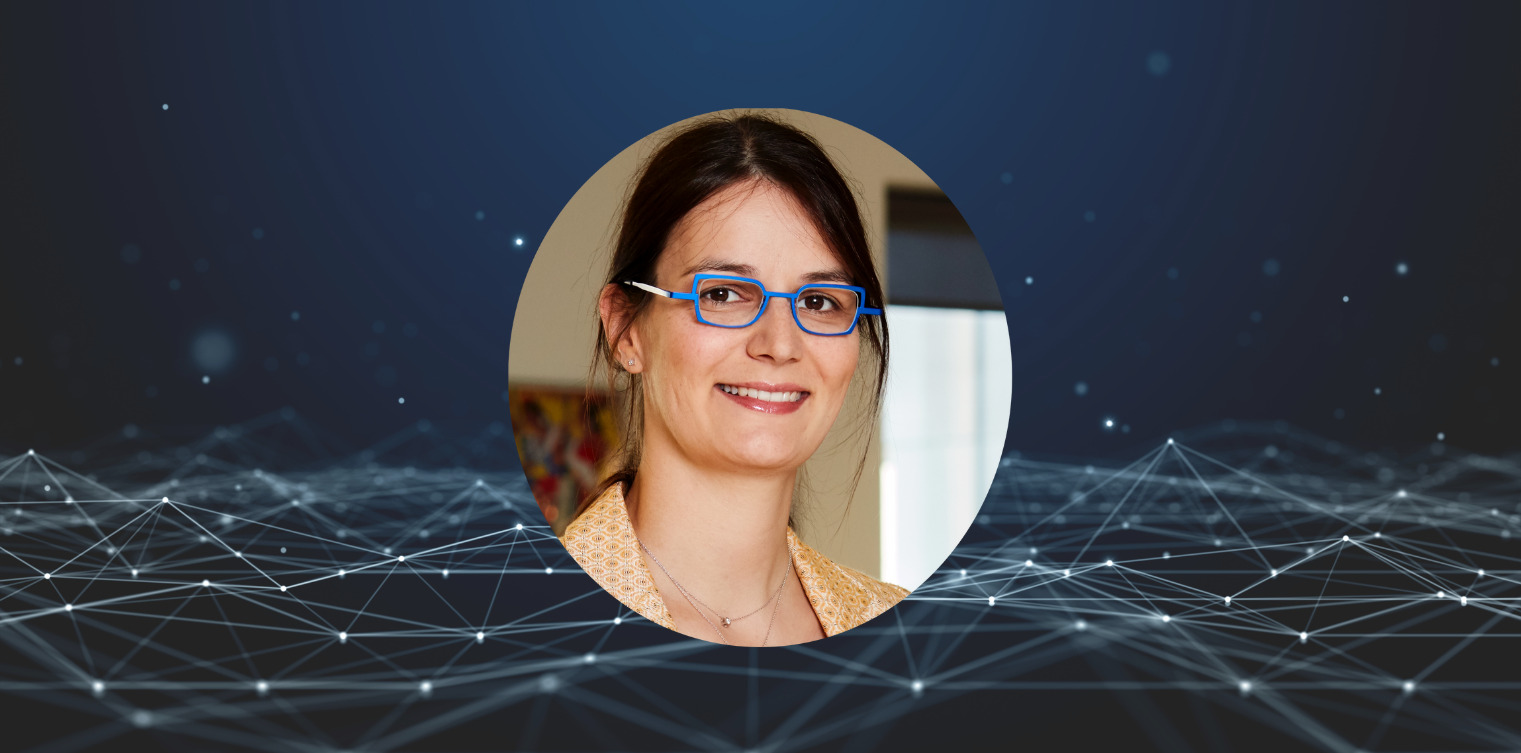The advancement of sustainable finance has been triggered by different activities such as regulation, increased demand or the need to face and revert climate change. To go a step further some challenges need to be addressed, for example, all that surrounds the data issue: How to collect data? How to gather standardized and harmonized data? How to report on these data?
On the lookout for solutions, technology can play an important role in helping find practical ways to address these challenges. Among the different types of technology, blockchain stands out for its particular characteristics: it ensures traceability and it provides immutable information.
This month we have interviewed Emilie Allaert, Head of the Luxembourg Blockchain Lab (LBL). We discussed with her about blockchain and how it can help advance sustainable finance. We also deep dived into the recently launched call for projects on sustainable blockchain solutions that the Luxembourg Blockchain Lab has launched in collaboration with the LSFI.
Luxembourg Sustainable Finance Initiative (LSFI): Can you explain in brief what blockchain is and why it is relevant in particular for the Luxembourg ecosystem?
Emilie Allaert (EA): Blockchain is a technology with specific characteristics such as traceability, immutability, cryptography and auditability which can be tailored to the needs of a project. While often compared to a database, its capabilities make it an interesting technology with endless opportunities. It lies on the principle of decentralization and peer-to-peer. Once the information is included in the ledger, it cannot be changed; this creates added value in those cases when we need to make sure that the information at our disposal is correct and not altered in any way.
Luxembourg has a diversified industry, allowing for multiple applications. It is also the perfect test ground for these solutions due to the country’s size and political support alongside technology advancements. Implementing such technology more frequently, next to the efficiency gain and increased transparency for users, would put Luxembourg at the forefront of innovation.
(LSFI) Why setting the Blockchain Lab in Luxembourg (LBL)? What is the mission, and what are the gaps you aim to cover?
(EA) The Luxembourg Blockchain Lab has been set-up to answer the growing needs for a dedicated ecosystem. It has been recognized as a cluster dedicated to the blockchain technology. Luxembourg has always been open to innovation and looking to diversify its economy, the Lab is reaching out to all industries, without exception, to ensure the country’s competitiveness.
In fact, the Lab does not only have one mission, but 4, which are the following:
- Disseminating information and knowledge about Distributed Ledger Technology (DLT) / Blockchain, in an agnostic way.
- Educating, we hope to attract talents who have capabilities in blockchain.
- Helping all industries to find applicable solutions to address the challenges they are facing.
- Research & Development. Through the call for projects, the Blockchain Lab offers the possibility to run projects on a shorter term, for a period of 6 to 10 months.
One of its kind, the Lab focuses on Sustainable Development Goals (SDGs), convinced that DLT technology can be used to do good and promotes this approach. Next to this initial mission, the Lab, thanks to its growing ecosystem can present concrete solutions using DLT. More than words, we need actions and solutions.
(LSFI) What is the goal of the Call for Projects launched in collaboration with the LSFI? How can blockchain help face some of the challenges associated with sustainable finance such as the data one?
(EA) As a result of our core focus, the Blockchain Lab was looking for a partner to collaborate with in order to accomplish its mission. In parallel, the Luxembourg Sustainable Finance Initiative, wanted to help find potential solutions related to sustainable finance and, in particular, data.
After a brainstorming process, we identified a few challenges and gaps within the sustainable finance ecosystem and selected some SDGs that would interest the ecosystem and for which we believe blockchain could help address and bring added value.
For instance, at the moment, there is a lack of solutions that could provide a tool to assess the price of biodiversity, to measure scope 3 emissions or to gain granular data on the social dimensions. The aim of the call for projects is to have 6 to 8 companies developing solutions on these topics that could then be deployed upon request in various companies willing to test them.
Blockchain works as a network that stores information (data) transactions from various sources and ensures it remains the same, without alteration. In the three streams identified, the veracity of information is key. Indeed, we need the end user to be confident in the process and trust the data. In addition, this technology can help bridge the gap between the data pool and the dashboard by ensuring outputs that are unforgeable and results that are auditable.
(LSFI) What is the biggest added value of blockchain, especially in comparison to other technological solutions?
(EA) The most significant added value of blockchain is the immutability of information included in the ledger. Blockchain technology should be implemented or at least assessed when the veracity of information is key for the process or industry. It ensures that the data included is valid and has not been tampered with. It is essential when you want to prove that you have some certifications or controls during the process.
It is the only solution offering this level of certainty and a global access which can be adapted based on the needs.
(LSFI) Some areas of blockchain, such as the cryptocurrencies, have been associated with non-sustainable and very energy-intensive practices. Does this apply to blockchain as a whole? How is it possible to ensure the technology used is sustainable and how do you assess the impact?
(EA) It is, unfortunately, a hot topic at the moment. The emergence of technology is bringing scrutiny and we need to pay attention to the type of technology used.
The technologies are adapting to the need to be more sustainable and less energy-intensive. More and more distributed ledger technologies (DLT) are offering solutions that are conscious of these elements and are now more efficient in terms of energy than the transactions performed within the traditional financial sector.
To assess the sustainability factor of a distributed ledger technology, it is essential to perform a due diligence and define whether it is in line with your policy or sustainability sensitivity. While it might be easy to access this information for the most known technologies, it is more difficult for recent ones. Research papers on the topic are numerous and updated regularly, they constitute a good basis to determine whether a technology could be used in a sustainable finance project.





